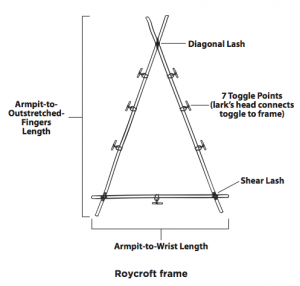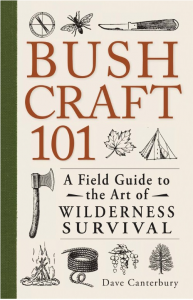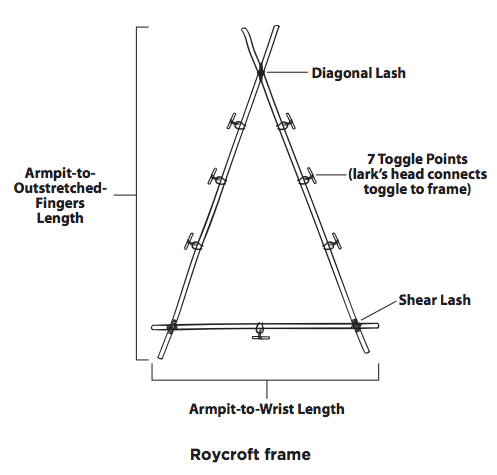Pack frames are my favorite system for carrying gear into the field. You can use them as a standalone item or combine them with other items. The versatility of external frames has been all but forgotten today.
By Dave Canterbury
The most popular improvised frame today is the Roycroft frame, named after T Roycroft, an outdoorsman who taught the construction of this type frame to Mors Kochanski, the famous Canadian bushcraft and wilderness survival expert.

This simple triangle can be constructed within minutes and can last many years if the lashings are correct and the wood selection is wise. to create this type of frame, first cut three components (easily made from a single hardwood sapling), and follow these lashing instructions:
- Cut a lumbar slat or split piece of hardwood approximately 2″ wider than the lumbar region of your back (or about the length of your armpit to your wrist).
- Cut 2 pieces 1–11⁄2 times the length of your arm from armpit to outstretched fingertips.
- shear lash (see Chapter 3) both longer components about 1″ in from the ends of the lumbar slat, and then cross and diago- nal lash them about 4″ from the top to create a triangle.
- Once the frame is complete,create 7 toggle points for tying gear to the frame. The strap for the frame is made from a 12′ long single piece of rope or webbing by making a lark’s head knot passing through the top X of the frame. Then wrap the rope around the ears of the lumbar piece, tying around your waist to secure.
An advantage to this frame is that it does not have crossbars within the triangle frame, which would dig into your back. Other frame types with crossbars cause the pack’s load to push through the frame and into the back,causing discomfort over time.to pack the roycroft frame, you can use a similar method to making a bedroll. again, use the tarp as the outermost component. Instead of rolling the gear up in the tarp, fold the tarp around the gear, ensuring that the last fold becomes a flap to shed water. Lash this to the f rame using cordage in an X fashion, and tie it off with a jam knot or similar knot before adding straps and donning the pack.

Click to learn more … For more great information about this excerpt from “Bushcraft 101, A Field Guide to the Art of Wilderness Survival” be sure to visit this link: Click Here

